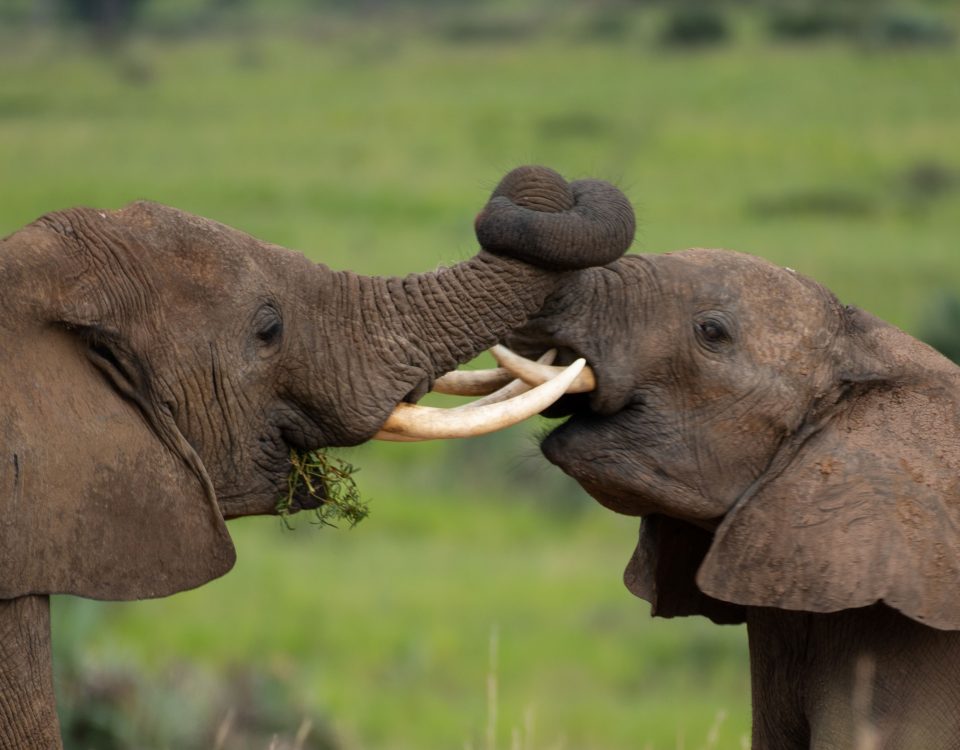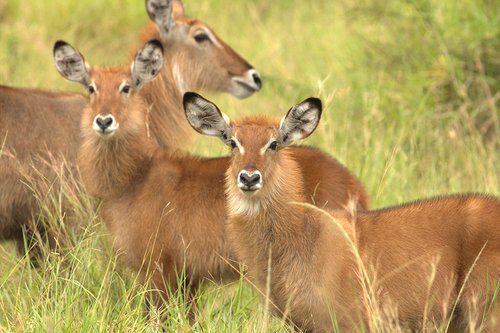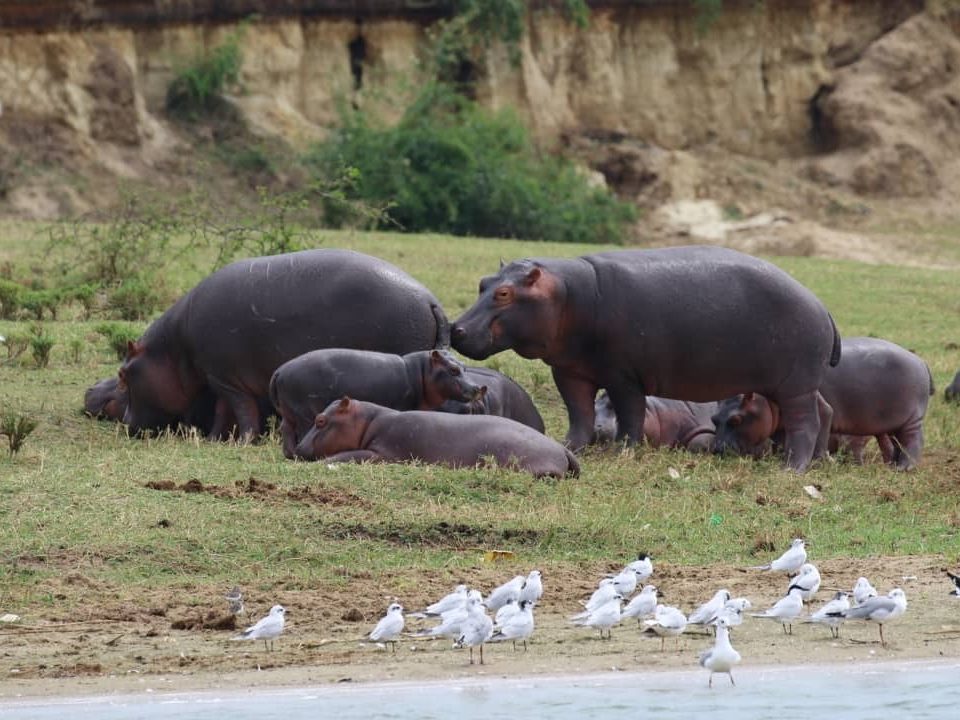Top Things to Do in Queen Elizabeth National Park
Stretching across 1,978 square kilometers, Queen Elizabeth National Park is a captivating wilderness teeming with life. Established in 1952 as Kazinga National Park, it gained its current name in 1964 to honor a visit by the late Queen Elizabeth II. This iconic destination is a must-visit for those seeking unforgettable wildlife safaris in Uganda. The park is a UNESCO Biosphere Reserve boasting a mix of savannah, forests, wetlands, and volcanic craters. It is home to over 95 mammal species and more than 600 bird species, making it one of the most biodiverse areas in the region.
What to do in Queen Elizabeth National Park – Top Highlights of Queen Elizabeth National Park
Experience the thrill of a game drive in Queen Elizabeth National Park, where early morning or late evening drives offer the best chances for wildlife sightings. The park features prime game tracks in the Kasenyi Plains, Ishasha Sector, and North Kazinga Plains, each with unique wildlife encounters.
- Kasenyi Plains: Spot Uganda kobs, lions, elephants, and buffaloes across the open savannah.
- Ishasha Sector: Famous for tree-climbing lions, this area also hosts elephants, buffaloes, and topis, with game circuits offering excellent viewing opportunities.
- North Kazinga Plains: A biodiversity haven, perfect for spotting elephants, antelopes, and the elusive sitatunga.
For a truly unforgettable experience, arrange sundowners and bush breakfasts amidst the stunning African landscape.
Enjoy an immersive safari adventure that captures the essence of wildlife in Queen Elizabeth National Park!
The Kazinga Channel, is a 32-kilometre-long freshwater channel that links Lake Edward to its smaller neighbour, Lake George, which are part of the African Great Lakes system. The channel offers daily 2-4 hour boat cruises at 11:00 AM and 2:00 PM. Guided by experts, you’ll spot a variety of wildlife, including elephants, buffaloes, crocodiles, and hippos, alongside a dazzling array of birds near the shore. This journey is perfect for offering up-close views of nature’s finest moments in Queen Elizabeth National Park.
Hiking in Queen Elizabeth NP
Queen Elizabeth National Park offers amazing hiking and walking adventures. Whether you’re trekking through the lush Maramagambo Forest, exploring the dramatic Kyambura Gorge, or strolling along the Mweya Peninsula for mongoose tracking, the park’s trails are rich with life and beauty.
As you hike, you’ll encounter a fascinating array of primates, wildlife, exotic bird species, vibrant butterflies, and towering trees. The trails, which range from 1 to 6 hours, are perfect for both seasoned hikers and nature lovers alike. With a guide by your side, every step brings you closer to the wonders of Uganda’s wilderness.
Bird watching
Queen Elizabeth NP is classified as an Important Birding Area (IBA) by Birding International. There are about 619 bird species found in the park making it a birder’s haven. The species include water birds, woodland, and forest dwellers in the Maramagambo and Kyambura Gorge Forest, 54 raptors, and various migratory species. For the best birding in Queen Elizabeth National Park, below are the best spots to visit.
Along the 34km shoreline of Kazinga Channel, Kasenyi Area, Mweya Peninsula, Maramagambo Forest, Ishasha Sector, Lake Kikorongo, Katunguru Bridge area, and Katwe Area. The bird species include the Grey-headed Kingfisher, Collard Pratincole, African Jacana, Pin-tailed Whydah, Martial Eagle, Gabon, Slender-tailed Nightjars, the lovely Black-headed Gonolek, Great and Long-tailed Cormorants, Common Squacco Heron, Papyrus Gonolek among others.
Maramagambo Forest
If you are interested in nature walks and hiking, Maramagambo forest is the spot to visit. The forest is bordered by Lake Nyamusigiri and Lake Kyasanduka a habitat for primates among which are the chimpanzees, and plenty of monkey species like the black and white colobus, red-tailed vervet, and the L’hoest monkey. Bird watchers are in for a delight as there are about 250 bird species within the forest and along Lake Nyamusigiri. Other activities in this forest are nature walks that last from 1-6 hours, and visiting the bat cave that also has resident rock pythons.
Kyambura Wildlife Reserve
This reserve is separated from the Queen Elizabeth NP by the Kyambura Gorge and the Kazinga Channel. There are a variety of bird species habitats in the reserve among which are the greater and lesser flamingos. It is also a good spot for exploring the scenic crater lakes like Lake Bagusa and Lake Maseche all saline in nature in addition to being habitats of a variety of water birds.
Chimpanzee tracking in Kyambura Gorge
Kyambura Gorge forms a border between the Queen Elizabeth NP and Kyambura Wildlife Reserve. The gorge also known as the ‘Valley of the Apes’ is a habitat of the chimpanzees. There are about 19 individuals habituated in the gorge and chimpanzee trekking sessions start at 8 am and 2 pm daily though sightings are not guaranteed. However, the descent into the 100-meter-deep gorge is one of the fascinating experiences of the visit. If you are focusing on chimpanzee trekking, then we do recommend Kalinzu Forest Reserve and Kibale Forest National Park.
Kalinzu Forest Reserve
Kalinzu Forest Reserve is 45 minutes drive from Queen Elizabeth NP and is one of the best spots to track chimpanzees and the age limit is 12 years old. There are about 300 chimpanzees among which 40 individuals are habituated by Japanese researchers. There are also 6 other primates the Blue monkeys, Black and White monkeys, Red-tailed colobus monkeys, l’hoest monkeys, Bushbabies, Galagos, and Pottos monkeys, and about 370 bird species.
Mongoose tracking
This is a 3-hour activity done along the Mweya peninsula overlooking the Kazinga Channel learning about the banded mongoose. There are about 450 individuals in 10 social groups and together with the researchers using locator devices, you will learn about their habituation calls, record their weight, identify some of them, monitor their behaviors and all these details will be added to the researcher’s database.
Lion experiential project
This activity is done with the researchers at the park either early morning or in the evening. The experience lasts between 1-3 hours and allows visitors to actively participate in monitoring the pride in the park, using locator devices and learning habituation calls, as well as monitoring weather, surroundings, and behavior. The results are added to researchers’ databases, contributing valuable information to the overall understanding of wildlife ecology, and helping to conserve this wonderful ecosystem.
Katwe explosive crater drive
For geological lovers, watch what volcanic activity created along the Albertine Rift Valley along the 27 km drive between the Kabatoro gate and the Queen’s pavilion. Take in the sight of Lake Katwe Salt Works along the Lake Katwe Salt tour learning more about salt mining from the local community. You will get a chance to view the Rift Valley Escarpment, Lake George, Mountain Rwenzori, and the Kazinga Channel along the drive.
Leopard village
This is located in the village of Muhokya and is one of the community-based development initiatives of the local community and the Uganda Carnivore Program. The partnership is between the Muhokya, Kahendero, Hamukungu, and the Uganda Carnivore Program with support from global partners. The project within Queen Elizabeth NP aims to promote the conservation of wildlife and culture through eco-tourism. Get to learn more about the traditions and the way of life of the Bakonzo, Banyabindi, and Basongora ethnic groups through traditional dances and songs, handicrafts made, and visiting local schools.
For more information about tours to Queen Elizabeth National Park, please contact us at info@travelerslinkafrica.com





